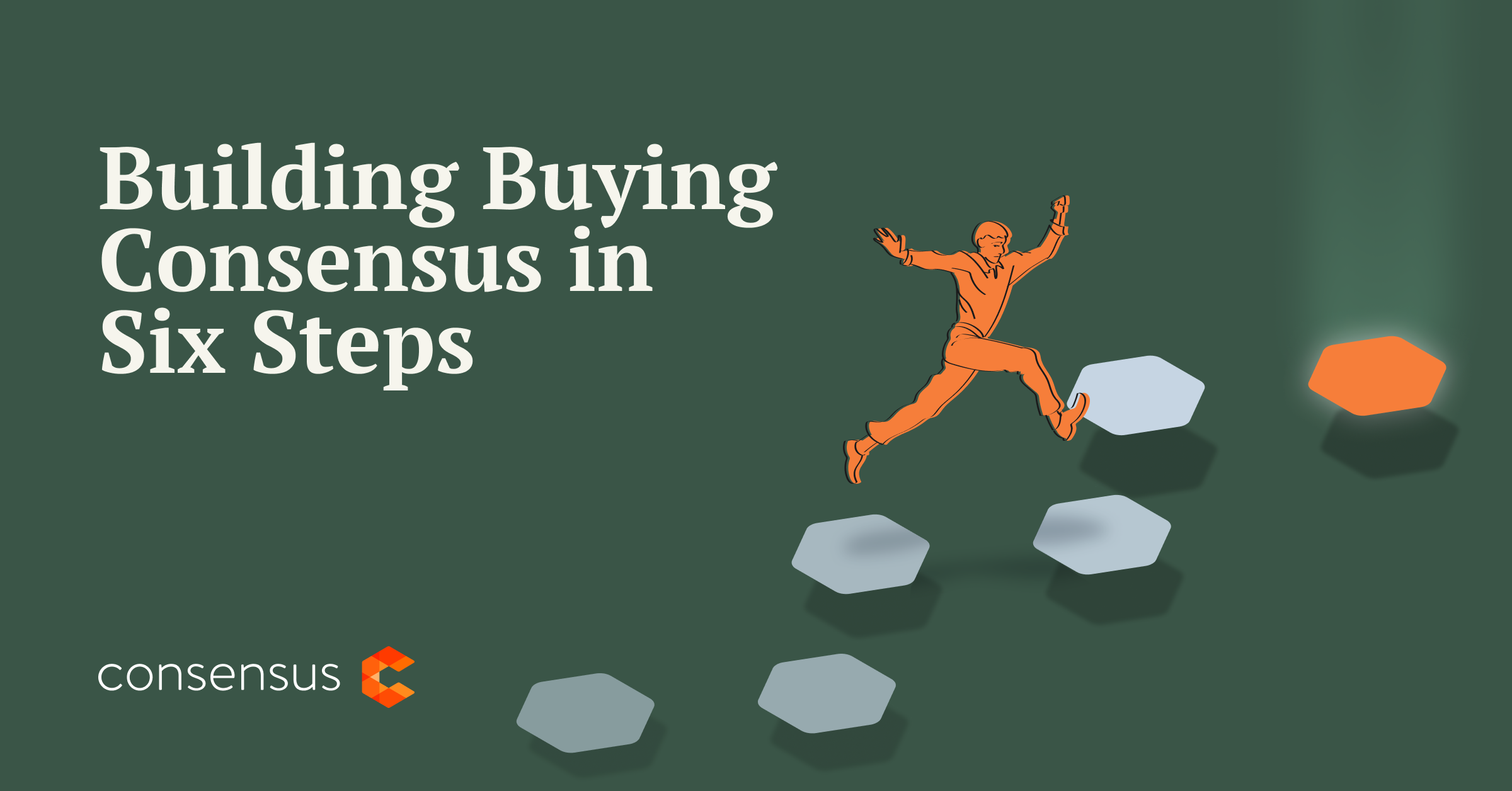Wayne Cerullo hosted a webinar for us about building buying consensus. As the founder of B2B Partners, a leading B2B marketing and sales strategy group, he can provide some pretty crucial insights on this from his 20 years of experience. “The fact that there even is a buying group, that’s an ad hoc concept that we’ve created as sellers to talk about the people to whom we want to sell.”
You don’t see too many single decision makers these days. It’s a team game. The implication on sellers is that their job has become more about guiding and coaching a diverse group of personalities and priorities towards a consensus, than it is about selling.
B2B selling is really an exercise in mastering buyer enablement to facilitate complex purchases and technical sales. “As sellers, we’re all so focused on ‘Why can’t these buyers get it together?’ But if you’ve ever been in a corporation and tried to buy something, this is a really hard job. And, by the way, this isn’t a part of your normal day job.”
What sellers need to have in mind is to create a more frictionless path towards buying consensus, which translates to shorter sales cycles and higher close rates.
Here are six steps to help you facilitate buyer consensus in less time.
1. Learn Your Buyer’s Journey
“Really do the work, not imagine it, but actually talk to the people to track the journey that they go through.” Do not imagine what you think the buyer’s journey is. Actually conduct day-in-the-life interviews with your buyers to dig into what they deal with. You should try to conduct six to eight interviews focused on understanding how those companies decided to purchase your solution. Once you’ve learned their journey, you can understand how prospective companies will come to a consensus on your sale.
2. Learn Your Buyer’s Personal Roles and Goals
Each stakeholder has a role within the company and buying group. “Each of the key people who are involved in buying your product and in providing a perspective on it understand what they are looking to get out of this purchase.” Like the previous step, do not just make it up. Take the time to learn these goals and roles.
By doing the difficult work to learn about your buyer’s journey and goals, you may also discover some game changers your competitors are conducting. You can glean inside information about what works with your competitors and implement these strategies within your own sales team to help sway your prospective clients in your favor.
3. Identify Your Champions and Account Personas
Having contacts within an organization isn’t enough, you have to assign personas to the stakeholders. “So identify who the champion persona role generally is. Is it the finance person, the engineer, or the sales person?” Your champion functions as the internal salesperson for your solution.
Additionally, there is the account persona: the overarching collection of individual stakeholders. To fully understand the account persona, you need to understand how the personas interact and come to a decision. “We’ve introduced a concept that is called an account persona which is that you need to understand the dance that each of these personas plays a part of because there’s an overall orchestration that occurs here.”
4. Tailor Your Message to Each Persona and Stage
Change your messaging to fit their roles and goals. “Don’t use general messaging. Speak to the very specific role of each of those individuals based on your understanding.”Using tailored messaging builds trust between you and your champion allowing them to facilitate buying consensus in those internal conversations.
5. Equip Your Champions with Consensus Messaging
Equip them with insights to help sway the purchase decision in your favor when you are not present. “What are the engineers looking for, what are the data administrators looking for, what are each of the people who are involved in this decision looking for?” There needs to be something for everyone in this process and it needs to come from your champion to be effective.
6. Train Your Sales Teams to be Buyer Coaches
Take it one step further than marketing messaging and incorporate this into sales training. “This is all happy talk if we don’t turn this into marketing messaging as I’ve been focused on so far and then actual sales training.”
According to CSO Insight’s 2019 Sales Enablement Report, a formal coaching approach averaged a 14% higher win rate than a random sales coaching approach. “That means it needs to get incorporated into a sales playbook where the understanding of what to do with each of these different personas is built into your sales process.”This will help your sales team stand out from the competition because they can effectively anticipate the buyer’s needs.
By taking these six steps and utilizing technology, you can anticipate your clients’ buying process or your sales cycle. This enables you to give required information up front and bypass the preliminary questions your competitors are still working through. You can help your clients build consensus to get to a decision faster and more often. This will inherently lead to your sales cycle shrinking and your close rates increasing.



